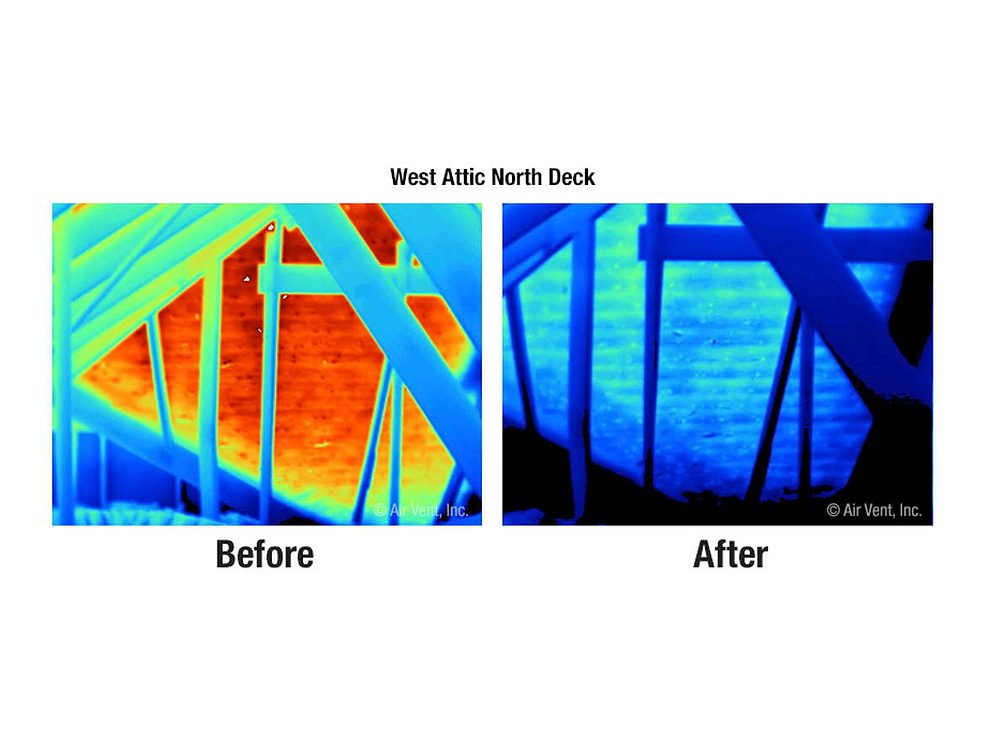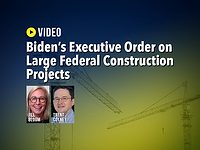News Analysis
Trump Rescinds Biden Executive Orders, Upending Key Federal Construction Policies
Policy reversals and pension liability expose deep industry divisions over labor agreements

PLAs: With Biden-era executive orders governing Project Labor Agreements and labor rescinded by the current administration, change is coming to the industry.
(Illustration made from staff photos courtesy of Firefly Image 3)
Marking a significant shift in federal construction policy, President Donald Trump rescinded several of former President Joe Biden’s executive orders last month, reigniting a heated debate over Project Labor Agreements (PLAs) and apprenticeship requirements in government-funded construction projects.
The moves have drawn sharply contrasting reactions from industry groups, highlighting a deep divide in how the construction sector views labor agreements and workforce development strategies.
“President Trump's elimination of President Joe Biden's failed policies is a win for America's taxpayers and construction industry,” said Ben Brubeck, Associated Builders and Contractors vice president of Regulatory, Labor and State Affairs.
ABC contends that government-mandated PLAs boost construction costs by 12% to 20%, reducing competition among qualified contractors.
Stan Kolbe, executive director of Government and Political Affairs at SMACNA, offered a contrasting view: “While many groups hyperventilate over the PLA issue, we see PLAs as the owner's insurance, their preferred option for how they wish to select higher quality contractors and verify labor quality.”
Kolbe stressed that PLAs are valuable for complex projects where “highly skilled contractors and extremely skilled workforces shine and profit.”
What are PLAs?
Project Labor Agreements are pre-hire collective bargaining agreements negotiated between a federal contractor and one or more labor organizations that set the terms and conditions for employment on a specific construction project.
In essence, a PLA binds all contractors and subcontractors working on a project to a uniform set of wage rates, benefits, work rules, and dispute resolution procedures.
The standard is intended to reduce the likelihood of labor strikes, prevent work stoppages, and promote coordinated labor-management stability on federal construction projects.
Federal agencies sometimes include PLA requirements in their solicitations—typically for large-scale projects, such as those with estimated costs at or above $35 million—to ensure that projects proceed efficiently and with minimal disruption.
Such mandates have been implemented through executive orders and are incorporated into the Federal Acquisition Regulation (FAR). These clauses require that all bidders and awardees agree to negotiate or become a party to the PLA, consolidating labor practices across multiple employers on a given project.
Impact on Roofing Contractors and the Roofing Industry
For roofing contractors, these policy shifts may have considerable implications. With federal PLA mandates on some projects now rescinded, roofing contractors could see reduced cost pressures linked to the 12% to 20% increase in project expenses.
Many in the roofing industry have long expressed concern over PLA-related pension liabilities. ABC's Brubeck noted that the multi-employer pension plan obligations create a “Hotel California” scenario for contractors, where early commitments translate into massive withdrawal liabilities.
This development could enhance competitiveness for non-union roofing contractors by lowering the threshold for bidding on government projects.
Additionally, the rollback of Biden-era apprenticeship mandates may affect workforce development. Labor Secretary Lori Chavez-DeRemer’s strong support of registered apprenticeship programs has been credited with maintaining high workforce quality.
Critics argue that many contractors have not sufficiently invested in training for a highly skilled workforce, even with these programs. Roofing contractors may face a balancing act: they could benefit from reduced mandatory costs while risking a potential decline in the long-term quality and training standards crucial for complex roofing projects.
Some industry observers warn that easing federal mandates might spur increased competition from private-sector projects where PLAs still flourish. Kolbe pointed to successful PLA use in large-scale ventures, emphasizing that rigorous workforce standards remain a priority when companies invest their funds.
Roofing contractors could see a parallel in projects outside government jurisdiction—raising questions about whether lowered regulatory costs might affect overall labor quality and project safety.
Continuing Controversy
The ongoing debate over PLAs directly impacts roofing contractors, as inconsistent policies across federal and private sectors can influence project costs, labor quality, and the competitive landscape.
The controversy over PLAs is longstanding. ABC argues that mandated PLAs compromise the voluntary system that has failed to meet demand for skilled labor, while Kolbe and others underscore the benefits of verified, high-quality labor on mission-critical projects.
The policy reversal now affects thousands of construction projects nationwide, prompting additional bid protests and legal challenges.
While these federal moves have broader implications, roofing contractors in both government and private sectors will need to assess how the evolving regulatory landscape influences project bids, worker training investments, and overall cost structures.
Timeline for Rescinding Executive Orders
The March 14 executive order from Trump revoked 19 Biden administration actions, including three key orders that had a significant impact on the construction industry:
- Executive Order 14126 ("Investing in America and Investing in American Workers"), signed Sept. 6, 2024, which had pushed PLAs and other union policy priorities on federally assisted construction projects funded by taxpayers.
- Executive Order 14119 ("Scaling and Expanding the Use of Registered Apprenticeships in Industries and the Federal Government and Promoting Labor-Management Forums"), signed March 6, 2024, mandated government-registered apprenticeships on federal and federally assisted construction projects.
- Executive Order 14026 ("Increasing the Minimum Wage for Federal Contractors"), signed April 27, 2021, established higher minimum wage requirements for employees working on federal contracts.
While President Trump has rescinded these orders, Biden's Executive Order 14063, which mandates PLAs on federal construction projects of $35 million or more, remains in effect following a U.S. Court of Federal Claims decision that upheld the mandate despite ABC members' legal challenge.
The ruling did, however, invalidate PLA requirements for the specific 12 bid protests that were filed against three federal agencies. While limited in scope, the decision has prompted contractors to file additional bid protests, potentially setting up broader challenges to the mandate.
Following the court's ruling, the Department of Defense has already withdrawn PLA mandates from military construction projects, and the Department of Veterans Affairs has followed suit.
The impact could be substantial. Before the Biden administration's rule, the federal government had mandated PLAs on only 12 of 3,222 federal construction contracts worth $25 million or more.
But regardless of mandates, Kolbe said PLAs are growing more popular. Blue states and cities are increasingly adopting PLA requirements for public projects to address the skilled workforce crisis nationwide; PLAs are also gaining popularity in the private sector.
Quick Read: 5 Takeaways
- Trump Revokes PLA Mandates: President Trump rescinded several Biden-era executive orders promoting Project Labor Agreements (PLAs) and apprenticeship programs on federal projects.
- Roofing Contractors May Benefit: The rollback could reduce roofing contractors' costs by removing PLA-related expenses and pension liabilities, improving access to federal contracts for non-union firms.
- Debate Over Labor Quality: Supporters argue PLAs ensure skilled labor and project stability, while critics claim they inflate costs and restrict competition — especially affecting small and non-union contractors.
- Apprenticeship Concerns: Removing mandatory apprenticeship programs may reduce training burdens but could also threaten long-term workforce development and labor quality in the roofing industry.
- Policy Patchwork Creates Uncertainty: Despite federal changes, PLAs remain popular in blue states and private projects, creating a fragmented regulatory environment that roofing contractors must navigate.
“The major CHIP, pharma, energy, and auto corporations avoid a long list of risks by bidding and building with private PLAs, in most every case,” Kolbe concluded.
“In the private sector market, major corporations use PLAs for building in less-than-friendly-to-labor red states, without existing labor relationships or interest in a union operation,” he added. “But they build with PLAs to lock in an organized, highly skilled RAP / JATC trained workforce, because it best meets their exceedingly high standards. That really says it all.”
For a more in-depth understanding of the issues, view Austin Keating's article on achrnews.com HERE.
Looking for a reprint of this article?
From high-res PDFs to custom plaques, order your copy today!







